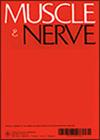日本多灶性运动神经病变:关于发病率、临床特征和治疗的全国性调查
IF 2.8
3区 医学
Q2 CLINICAL NEUROLOGY
引用次数: 0
摘要
简介/目的多灶性运动神经病(MMN)是一种罕见疾病,其流行病学和临床数据都很有限。我们开展了一项全国性调查,以确定该病在日本的流行率、发病率、临床概况和治疗现状。向日本所有神经内科和小儿神经内科发出了调查问卷。最初的问卷调查旨在确定 MMN 患者的人数和发病率。第二份问卷用于收集详细的临床信息。结果 MMN 患者的估计人数为 507 人,估计发病率为 0.5%。估计发病率为每 10 万人中有 0.40 人。120名患者有详细的临床资料。男女比例为 2.3:1,中位发病年龄为 42 岁。确诊时的中位病程为 25 个月。大多数患者表现为上肢肌肉无力。62%的患者出现运动神经传导阻滞,54%的患者抗GM1 IgM抗体呈阳性。共有 117 名(98%)患者接受了免疫球蛋白治疗,其中 91% 的患者病情有所改善。在最后一次就诊时(中位数为治疗开始后 82 个月),89 名患者(74%)正在接受免疫球蛋白维持治疗。讨论日本的大多数 MMN 患者都接受了诱导和维持免疫球蛋白治疗,这似乎抑制了疾病的长期发展。本文章由计算机程序翻译,如有差异,请以英文原文为准。
Multifocal motor neuropathy in Japan: A nationwide survey on prevalence, clinical profiles, and treatment
Introduction/AimsMultifocal motor neuropathy (MMN) is a rare disease for which epidemiological and clinical data are limited. We conducted a nationwide survey to determine disease prevalence, incidence, clinical profile, and current treatment status in Japan.MethodsA nationwide survey was conducted in 2021 using an established epidemiological method. Questionnaires were sent to all neurology and pediatric neurology departments in Japan. An initial questionnaire was administered to determine the number of patients with and incidence of MMN. A second questionnaire was administered to collect detailed clinical information. The European Federation of Neurological Societies/Peripheral Nerve Society 2010 guidelines were used as diagnostic criteria.ResultsThe estimated number of patients with MMN was 507. The estimated prevalence was 0.40 per 100,000 individuals. Detailed clinical profiles were available for 120 patients. The male‐to‐female ratio was 2.3:1 and the median onset age was 42 years. The median disease duration at diagnosis was 25 months. Most patients presented with upper limb‐dominant muscle weakness. Motor nerve conduction blocks were found in 62% of patients and positive anti‐GM1 IgM antibody results in 54%. A total of 117 (98%) patients received immunoglobulin therapy, and 91% of them showed improvement. At the time of the last visit (median, 82 months from treatment initiation), 89 (74%) patients were receiving maintenance immunoglobulin therapy. A slight progression of neurological deficits was observed during follow‐up.DiscussionMost patients with MMN in Japan received induction and maintenance immunoglobulin therapies, which appear to suppress long‐term disease progression.
求助全文
通过发布文献求助,成功后即可免费获取论文全文。
去求助
来源期刊

Muscle & Nerve
医学-临床神经学
CiteScore
6.40
自引率
5.90%
发文量
287
审稿时长
3-6 weeks
期刊介绍:
Muscle & Nerve is an international and interdisciplinary publication of original contributions, in both health and disease, concerning studies of the muscle, the neuromuscular junction, the peripheral motor, sensory and autonomic neurons, and the central nervous system where the behavior of the peripheral nervous system is clarified. Appearing monthly, Muscle & Nerve publishes clinical studies and clinically relevant research reports in the fields of anatomy, biochemistry, cell biology, electrophysiology and electrodiagnosis, epidemiology, genetics, immunology, pathology, pharmacology, physiology, toxicology, and virology. The Journal welcomes articles and reports on basic clinical electrophysiology and electrodiagnosis. We expedite some papers dealing with timely topics to keep up with the fast-moving pace of science, based on the referees'' recommendation.
 求助内容:
求助内容: 应助结果提醒方式:
应助结果提醒方式:


